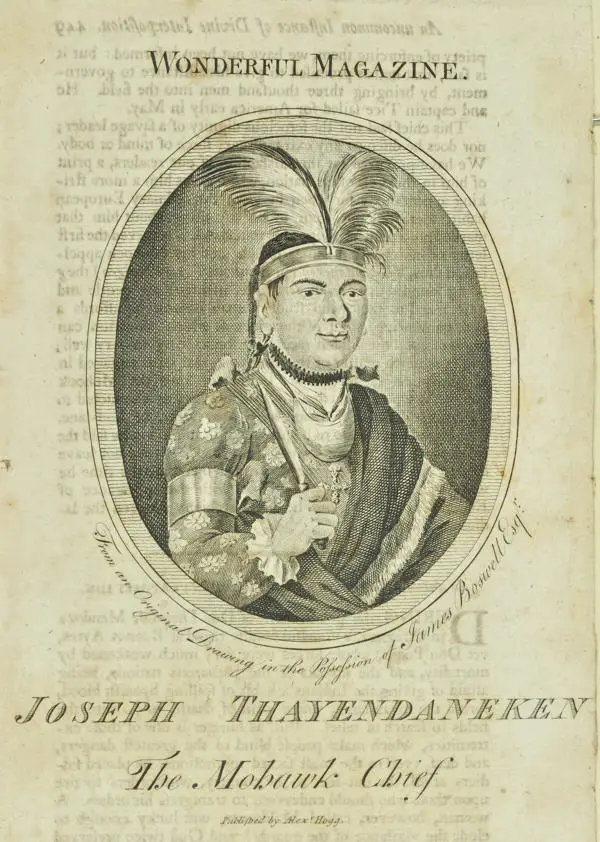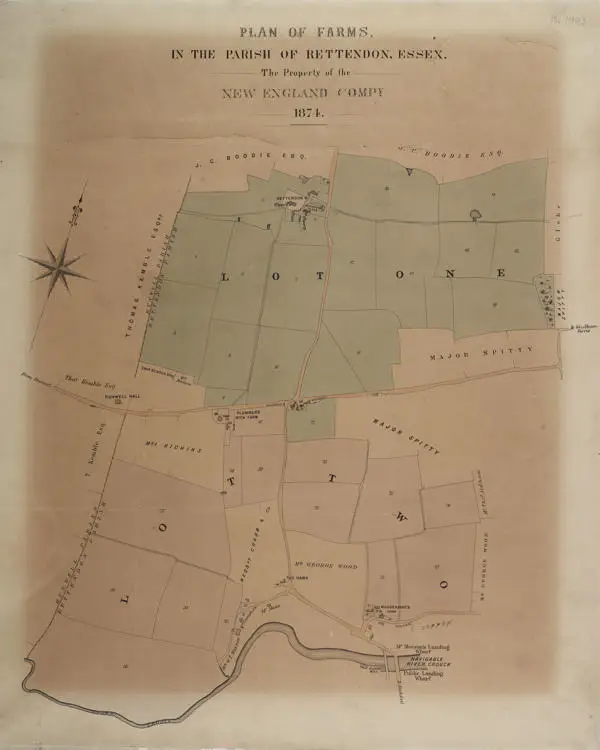New England Company
The records of the New England Company: a window into the history of Colonial America and its indigenous people
You might be surprised to learn that LMA holds items in the people languages of Algonquin and Mohawk. These are amongst the archive of the New England Company, the oldest English Protestant missionary society, founded in 1649 to convert the indigenous people of America to Christianity. Many figures of North American history were associated with the Company including Increase Mather (who was involved in the Salem witch trials) and Experience Mayhew (whose son Jonathan coined the phrase ‘no taxation without representation’), as well as the influential Mohawk Thayendanegea also known as Joseph Brant. Jeff Gerhardt explores the history of the Company and its records held at LMA.

History
The New England Company was founded in 1649, becoming the first English Protestant missionary society. Originally called the 'Society for the propagation of the gospel in New England and the parts adjacent in America', its initial aim was to convert the indigenous people to Christianity through the work of missionaries.
Eleven years after the arrival of the Mayflower, Puritan minister John Eliot emigrated to New England in 1631. Eliot was an influential figure and is likely to have influenced Oliver Cromwell through his essays. Cromwell proposed the founding of the Company by Act of Parliament in 1649 and the Society’s first members were primarily wealthy Puritans, the first President being William Steele, Lord Chancellor of Ireland.
Following a drive for donations, the Company purchased land to ensure continued income from rents, the largest purchase being in Suffolk in 1653. Income raised from the Company’s rents was sent to a body of Commissioners in New England who supported the work of the missionaries. There were often disagreements between the Company, the Commissioners and the missionaries on how the money was best spent.
After the restoration of Charles II in 1660, all acts set up by Oliver Cromwell were no longer valid and the company set out to obtain a royal charter which was granted in 1662. The new Governor was the renowned scientist Robert Boyle who became very active in the affairs of the Company. Boyle was particularly well suited to the role as he was interested in both the American colonies and theology.
In 1650, Eliot, the most successful of the missionaries, established an indigenous people township in Natick, Massachusetts. Indigenous people who converted to Christianity were known as Praying Indians and Natick became the centre of Eliot’s missionary work. It was here in 1663 that the first bible to be translated into an indigenous language, Algonquin, was produced. It was a proud and significant achievement for the Company and Robert Boyle presented a copy to Charles II in 1664. Sadly, King Philip’s War of 1675 had a devastating effect on the Praying Indians of New England and the inhabitants of Natick were removed to Deer Island where many died. Natick’s indigenous community never fully recovered.
During the eighteenth century, the Company received various bequests including the Beckingham Estate, Essex from the Presbyterian minister Dr Daniel Williams. Missionary work increased in New England and many figures of early American history were either Commissioners or affiliated to the Company. Names include Increase Mather (who was involved in the Salem witch trials), Dr Cotton Mather, Samuel Sewall and Experience Mayhew (whose son Jonathan coined the phrase ‘no taxation without representation’) and the Company had close links with Harvard College. The early eighteenth century also saw the Company sending missionaries further afield to New York State and an aborted mission to Virginia in the 1760s. In 1769, the Company printed the first translation of the Book of Common Prayer into the Mohawk language for use by the Iroquois Nation.
The American War of Independence disrupted the Company’s missionary work and thereafter efforts were concentrated on indigenous tribes in Canada and the West Indies. The influential Mohawk Thayendanegea or Captain Joseph Brant moved the Iroquois to Brantford, Ontario and established the Mohawk Chapel in 1782 - the oldest surviving church in Ontario. Brant became the chief agent for the New England Company, visited Britain twice and was presented to the King. In the early nineteenth century, the Company continued its support for the Mohawks and built two new schools in Brantford.
The nineteenth century also saw the Company working closely with the Anglican Church and come under the direction of the Bishop of Quebec. It extended its work in Canada in closer partnership with local bishops and the Canadian Government's Department of Indian Affairs. In the twentieth century the Company handed over its remaining schools to the Canadian government and concentrated on managing its estates in England. The proceeds from the estates are sent to the bishops in Canada and the Archbishop of the West Indies for distribution for grant funded projects. You can find out more about the work of the New England Company on its website.

Records
The collection reference is CLC/540 and records comprise: charters (1662-1961); court and committee minutes (1655-1994); copy minutes of Commissioners for Indian Affairs (1699-1818); court attendance books; papers on affairs in New England (1657-1764); papers relating to the proceedings of the Company (1649-1656); letter books (1688-1772); financial records; reports on Company affairs and undertakings; papers about support for missionary activity in West Indies and Canada.
Also included are deeds and papers relating to Company estates, particularly in Essex, (1543-2004); inventories of Company effects in New England (1708, 1714); papers concerning Robert Boyle's annuity; copy will of Rev Daniel Williams; and papers relating to William Pennoyer's charity.
Of particular interest is correspondence from Boston, Massachusetts relating principally to Indian affairs, 1677–1745 (CLC/540/MS07955); a collection of papers relating to the Indians, 1669-1727 (CLC/540/MS07957); third edition Book of Common Prayer translated into the Mohawk language, 1780 (CLC/540/F/02/001) with manuscript description of the peace treaty between the Iroquois Nation and New York State at Fort Stanwix, New York; and a sketch of Mohawk Village, Brantford, Ontario, 1830. Unfortunately, these last two items are currently Unfit for access.
Further reading
- Kellaway, William, 'The New England Company 1649-1776: Missionary Society to the American Indians', Longmans, Green and Co. Ltd. (1961)
- Winnifrith, Sir John et. al. 'The New England Company: 1870-1992: A Charity for the Propagation of the Gospel in New England and the parts Adjacent to America', The New England Company, (1993)
- Winnifrith, Sir John et. al. 'The New England Company: a Short Note and History', The New England Company, (1993).